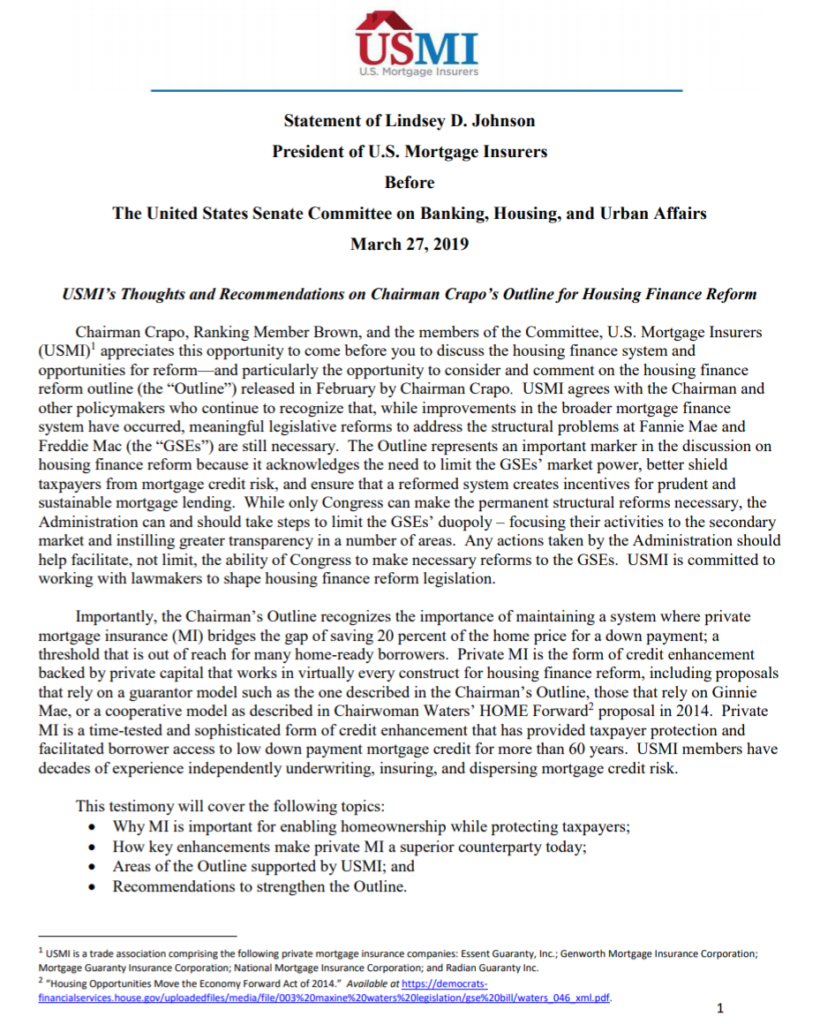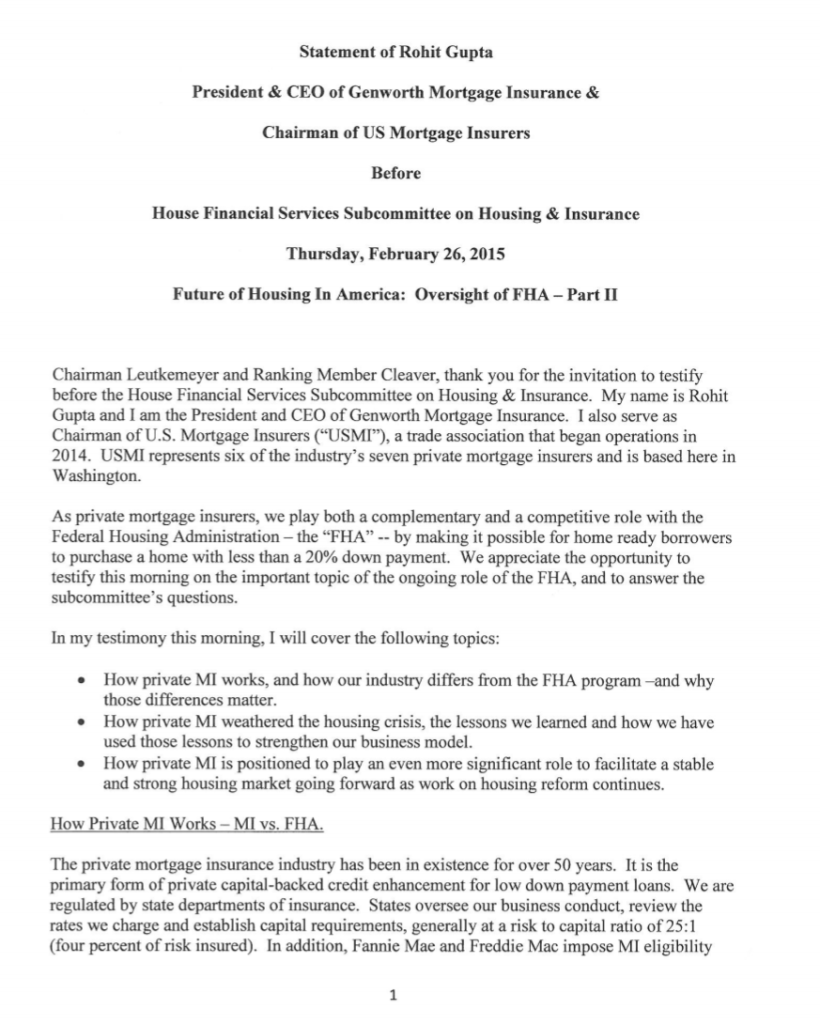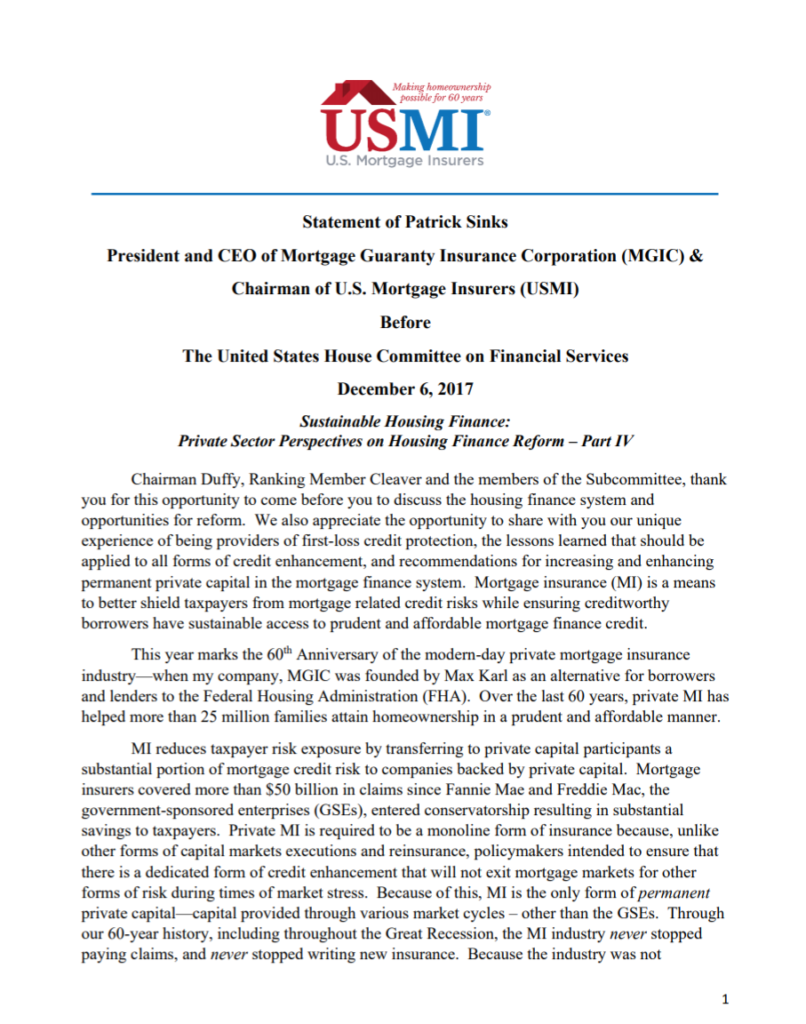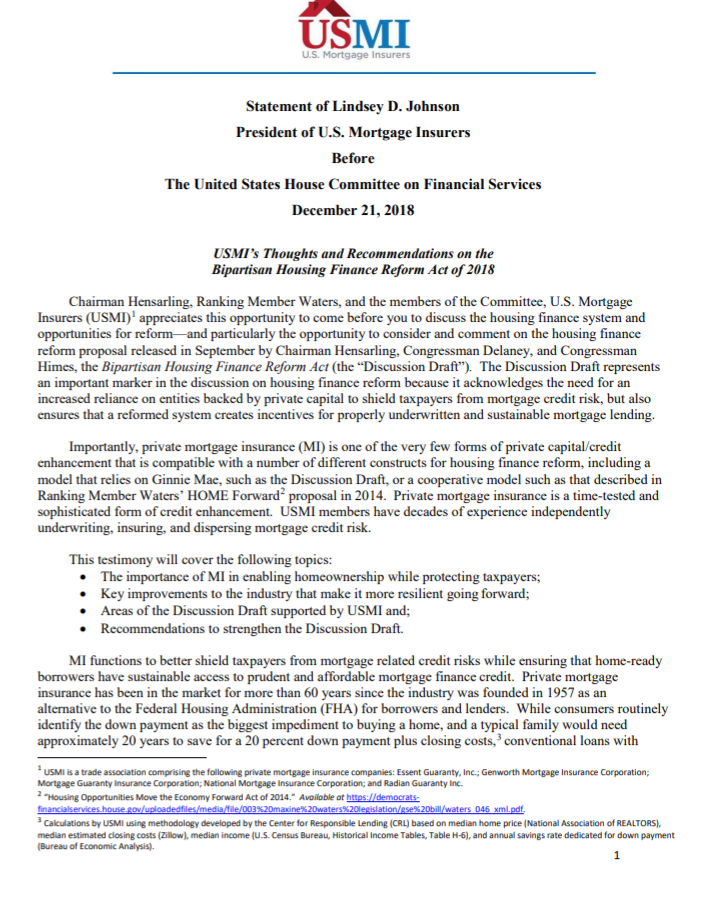By Brad Shuster
June is National Homeownership Month, and this year we celebrate amidst a national conversation about how best to reform the U.S. housing finance system to sustain and grow homeownership in a safe and affordable way. This should excite all Americans who are currently seeking to become homeowners and all those who will in the future, because maintaining access to low down payment mortgages continues to be critically important for millions of Americans to realize the dream of homeownership.
Last year alone, more than one million Americans purchased or refinanced a home using mortgages with private mortgage insurance (MI). They were able to overcome the widely held misconception that buyers need a 20 percent down payment, an amount that would take the average American family more than 20 years to save. Of the more than one million families that used private MI in 2018, nearly 60 percent were first-time homeowners who on average saved only 5 percent of the home purchase price as a down payment. Private MI allowed these borrowers to access the conventional mortgage market with sustainable, affordable mortgage options. In Washington, policymakers are currently exploring ways to help even more households realize homeownership the same way.
A new report showcases how private MI helps hard-working, home-ready families who access the conventional mortgage market, even when they don’t have a large down payment. The report highlights that in 2018, more than 40 percent of buyers with private MI had annual incomes below $75,000, and that there were significant wait times for prospective homebuyers attempting to save for a full 20 percent down payment. The report also underscores the significant mortgage credit risk protection that private MI provides to American taxpayers and the federal government.
The report, released by the U.S. Mortgage Insurers (USMI), finds it could take on average 20 years for a family earning the national median income of $61,372 to save 20 percent (plus closing costs) for a $262,250 single-family home, the national median sales price. However, this drops to seven years if the borrower uses a low down payment mortgage with five percent down. This represents a 65 percent decrease in wait time at the national level, and USMI found the same percentage decrease at the state level.
Unfortunately, today millions of Americans nationwide believe homeownership is out of reach. While there are many reasons for prospective homeowners to perceive homeownership as unachievable, including student debt or low wage growth, the most pervasive misconception is that they need to have a 20 percent down payment, according to the National Association of REALTORS. That is simply untrue. There are a variety of mortgage options available that can help prospective borrowers buy homes with as little as 3 percent down – such as conventional loans with private MI and government-backed loans like those insured by the Federal Housing Administration (FHA). Each option offers something different and has advantages and disadvantages, but as the new USMI report shows, private MI provides a safe and affordable way to buy a home for millions of families.
It is important for policymakers to understand the long, time-tested role MI has played as they seek to create a more robust housing finance system. Private MI serves as protection against mortgage credit risk if a borrower defaults on their mortgage. This means that every dollar a mortgage insurer covers when a borrower defaults is a dollar that Fannie Mae and Freddie Mac (the “GSEs”) and American taxpayers do not have to pay. In fact, since the 2008 financial crisis the MI industry has paid over $50 billion in claims – losses the government and taxpayers did not have to bear.
As the conversation continues over how to best increase American homeownership – a cornerstone of the U.S. economy – and protect taxpayers and the federal government along the way, this report provides valuable facts for the policymakers and regulators engaged in these discussions. The private MI industry’s long history of success in helping Americans qualify for low down payment mortgages highlights its critical role in the housing finance system, and we stand ready to do more to create a stronger and more sustainable housing market.
This column was published in The Hill on June 13, 2019.













